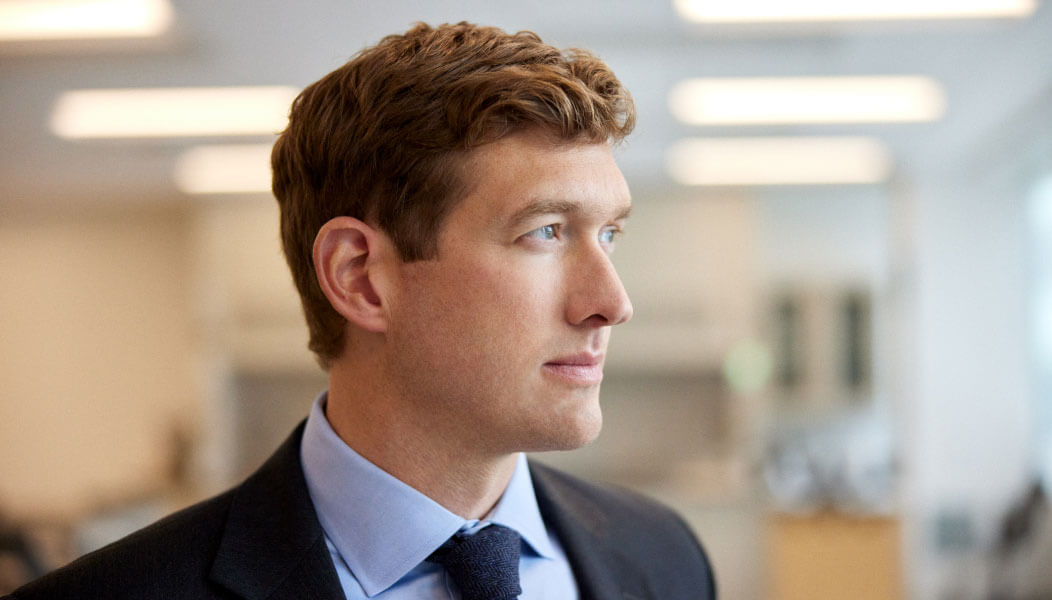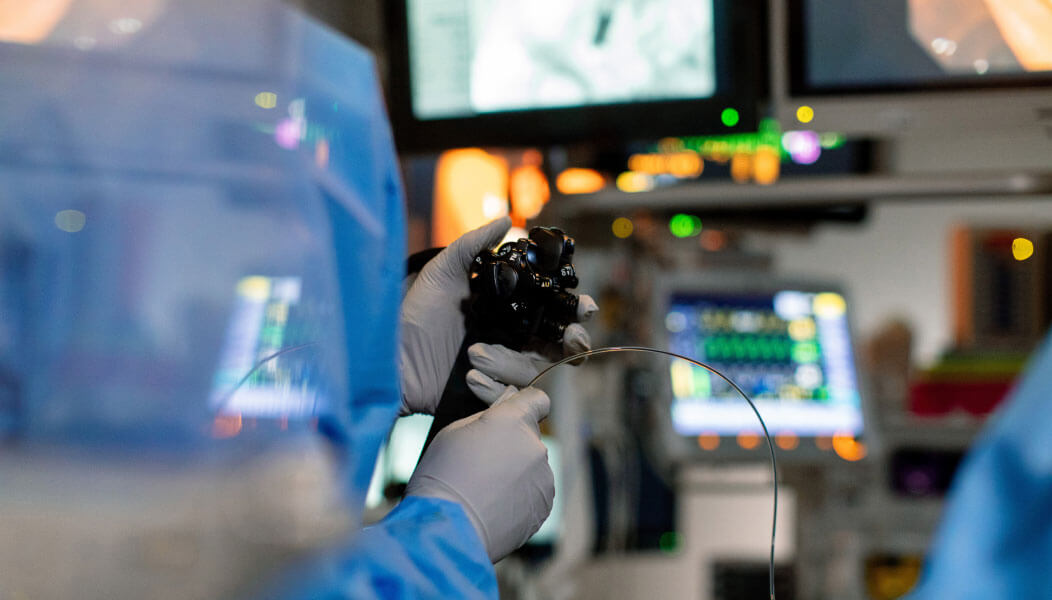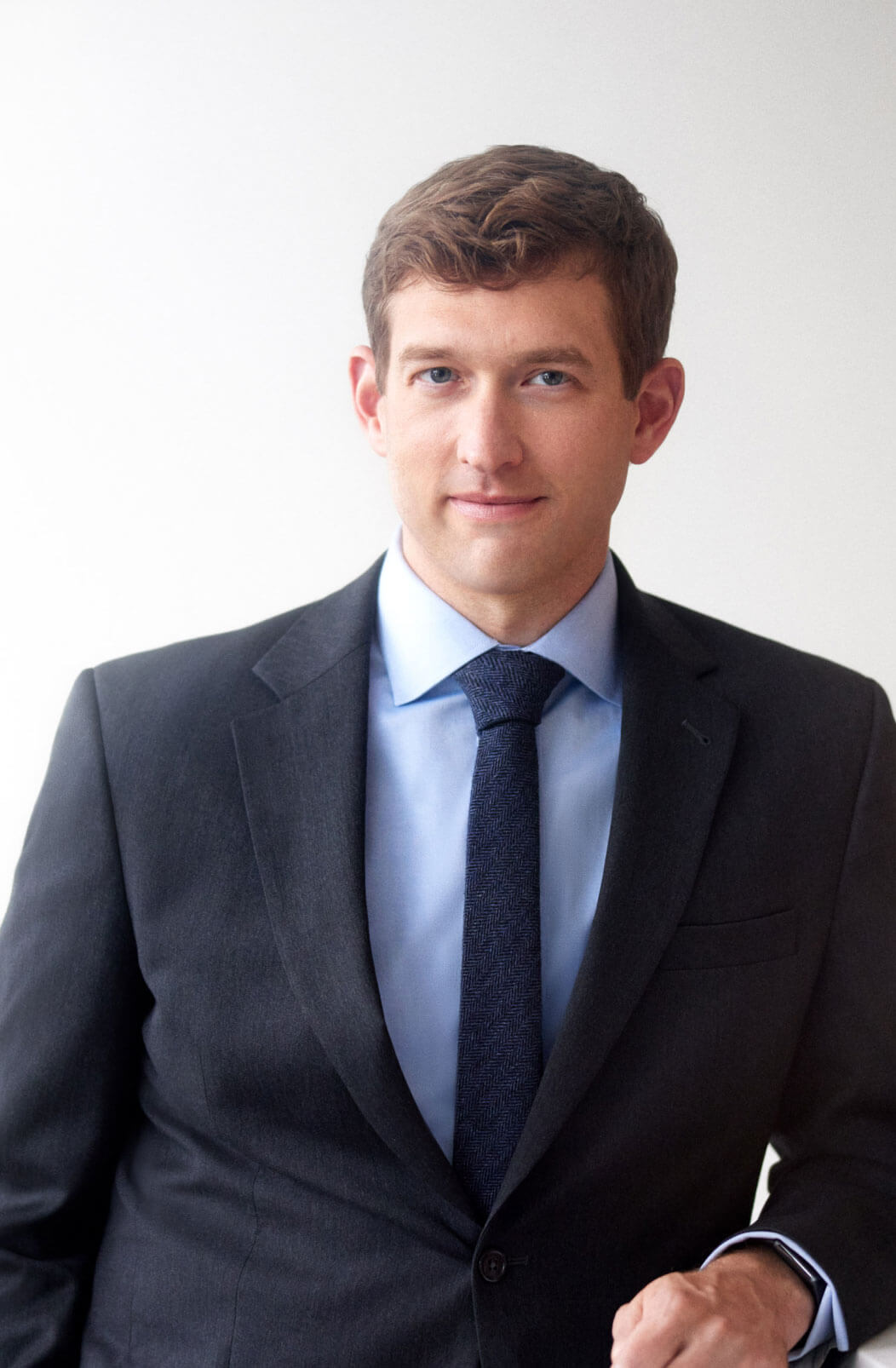“One major benefit is we often don't need to prescribe pain medications for the recovery,” he says. “So it saves people the risk of those pain medications as well. And the expense of an endoscopic procedure is often much lower in terms of recovery time and cost of the procedure itself. There are a lot of tangible benefits to what we're able to offer patients through endoscopy.”
Growing up in Lewisburg, Pennsylvania, Dr. Storm always loved science. He comes from a long line of physicians. “My grandfathers were both doctors. My father is a doctor, and three of my siblings are all physicians as well,” he says. “But I think it was my parents' medical missionary work that took us overseas—seeing the real-world impact they had in people's lives—that’s what inspired me to go into medicine.”


“As part of my training, I came to Mayo in 2017 for a one-year fellowship,” he says. “It is the best hospital in the country. And I thought it would be a fun adventure for my family. In the first six months, it became clear how special this place is.” It’s now been six years since that one-year commitment. He admits that it may sound like a cliché to say that a workplace would treat you like family. “Mayo Clinic isn't a workplace,” he says. “This is a place of healing and a place of curing.”
And a place to innovate. “At Mayo Clinic there’s an urgency to find new ways to treat patients,” he says. “We have protected time to allow us to develop these new tools and procedures. We have relationships with industry partners that allow us to rapidly prototype and test new procedures and devices. The speed at which we can go from research to trial to clinical use is unparalleled.”
“One of the procedures I'm excited about,” he says, “allows me to treat patients who have a blockage of the bowel. We can actually bypass the blockage by creating a new connection between the stomach and the small intestine using ultrasound guidance. All without surgery.”

The speed at which we can go from research to trial to clinical use is unparalleled.”
Dr. Storm adds, “One of my favorite patient stories is of a young man whose cancerous tumor had caused a blockage in his small intestine. The cancer was completely curable, but because of the blockage, he was unable to eat and therefore couldn’t receive treatment. He was so discouraged before the surgery that he wouldn’t talk to me. Using this procedure, we were able to bypass the tumor. I went to see him afterwards, and he was drinking a Coke, a huge smile on his face. He started eating and went home that same day. And now he’s cancer free and back on his wrestling team.”

“Even though I wish we could, not everything can be done through endoscopy,” he says. “But there are a lot of things people said couldn’t be done that the teams here at Mayo have been able to overcome. For example, in my own field we can now do bariatric or weight loss procedures all through endoscopy. Patients go home the same day. In the early days of endoscopic procedures, most hospitals were hesitant and saw it as a risk. But if it's the right treatment for patients—if it’s effective, and it’s safer? Then we do it. It’s now an approved and commonly performed procedure.
Even with all these technological advancements, Dr. Storm never forgets what’s most important: he’s caring for a person. “I was taught in medical school to maintain a distance. But patients come to us for answers. They want to know what I would do if I were in their shoes, or if I would offer this treatment to my mother or daughter. Offering an opinion is an important part of my practice, and it’s one way I connect with patients.”
At the end of the day, Dr. Storm says you cannot treat a patient without first making a human connection. “The most important part of my job is making sure my patient feels comfortable and understands the procedure. I invite them and their family to discuss the plan for the day and what to expect during recovery. We meet again after the procedure to make sure everyone hears firsthand how it went and to discuss the plan moving forward. Fear is just a dark place without knowing what's in that dark place. Knowledge is the light that allows you to get rid of those fears.”
Fear is just a dark place without knowing what's in that dark place. Knowledge is the light that allows you to get rid of those fears.”
“Sure, it’s a risk to try something new,” he says. “But that's where Mayo Clinic excels. Seeing a patient who was at their wit's end come to Mayo Clinic to be told that things aren't that bad, that we actually have a lot of opportunities to help them? That is what really brings a lot of satisfaction to my job.”
What does the future look like? “Twenty years from now, I'm hoping we have an option for patients to see us for procedures from inside their homes,” he says, “so we're able to reach more people across the globe. And I hope more procedures can be offered endoscopically. If I lose my job because we're able to perform procedures with robots that don't require humans, that's still a huge victory for our patients.”
What keeps moving Dr. Storm forward is his relentless search to create those new opportunities. “I have a little bit of a rebel in me,” he says. “I remember being asked to leave class in grade school for questioning teachers. But anytime someone says something can't be done, I’m immediately skeptical.”